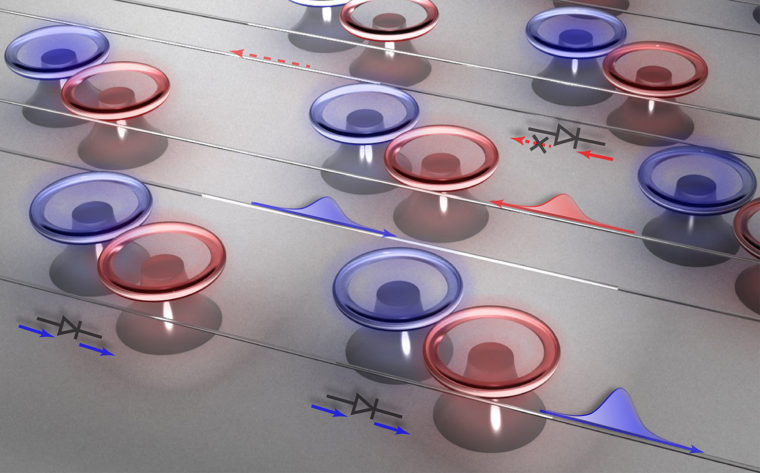In the sports world, it’s believed that records are made to be broken, but in the science and engineering world, it’s thought that laws exist to be broken.
“To push the boundaries of science and engineering, you need to break the old laws to open up different insights, scenarios, structures and possibilities,” said Lan Yang, the Edwin H. & Florence G. Skinner Professor of Electrical and Systems Engineering in the School of Engineering & Applied Science at Washington University in St. Louis.
Yang is the principal investigator of a four-year, $2 million grant from the National Science Foundation (NSF) in which she will oversee the takedown of two venerable physical laws: time-reversal symmetry and reciprocity.

Yang’s multidisciplinary collaborators are from Stanford University, the University of Minnesota and the University of Wisconsin-Madison and Wesleyan University. The team she leads will study novel ways in which light waves can propagate in next-generation technologies with impacts in public health, computation, information processing and communications applications.
The NSF program that administers the grant is the NSF Emerging Frontiers in Research and Innovation program (EFRI), which provides critical, strategic support of fundamental discovery at the frontiers of engineering research and education. These investments represent transformative opportunities, potentially leading to new areas for fundamental or applied research; new industries or capabilities that result in a leadership position for the country; and/or significant progress on a recognized national need or grand challenge.
This year, the NSF awarded 15 EFRI awards from among 86 teams participating in the competition.
Yang and her team are exploring nonreciprocity and time-reversal symmetry breaking in new physical systems. She explains time-reversal symmetry in terms of running a film from beginning to end and then rewinding it from end to beginning. In time-reversal symmetry, what goes around comes around — there is no fundamental difference between the forward and backward motions in time. Similarly, reciprocity involves a return from one point to another and back again. For example, in an optical fiber that has been used for long-haul communication, light can propagate in both forward and backward directions.
“We want to break the natural state to find phenomena or activities that are unexpected,” Yang said. “In most physical systems, we have time-reversal symmetry and reciprocity. What we are seeking is new ways of working with light and sound so that we can create system structures with new functionality enabled by nonreciprocity in wave transport and broken time-reversal invariance. To do that, we have to break the old laws.”
There are already a number of structures that are nonreciprocal, in electronic circuits and materials science, for instance. The electronic diode is a perfect example: In this structure current is allowed to flow in one direction, but is blocked in the other, so it is asymmetric.
“Our multidisciplinary team will employ complementary strategies to investigate time and space symmetries in multilength photonic systems,” Yang said. “We intend to violate time-reversal symmetry and induce nonreciprocal light transport. These two phenomena underlie some of today’s most important devices, from nanoscale diodes of integrated electronics to the nanoscale isolators and circulators in fiber optical networks.”
There are three thrusts in the EFRI project involving modeling; analysis design and control; and fabrication, testing and characterization. Yang and her team of electrical engineers, materials scientists, physicists and mathematicians will be plying mathematical tools and phenomena like magnetism to break the old and usher in the new. Team members are Jennifer Dionne, a Washington University engineering alumna, from Stanford University; Tsampikos Kottos from Wesleyan University; Mo Li from the University of Minnesota; and Zongfu Yu from the University of Wisconsin-Madison.
In addition, Yang’s team will design various education programs tailored for students at different levels. Team members will interact with undergraduate and graduate students from their own and other institutions through challenging online workshops, courses and a virtual lab for nanophotonics.
“A key goal of the EFRI research program is to broaden outreach to underrepresented groups from high schools, community colleges and minority-serving institutions to create new educational and community resources to advance science, technology and engineering concepts and knowledge,” Yang said.
Since joining the Washington University faculty, Yang has made a career based on often startling discoveries in light control and behavior on the nanoscale level. She has made landmark and often counterintuitive discoveries that have led to the understanding of light transport, energy loss and chaos and light-matter interactions in nanoscale and microscale optical systems, such as lasers and fiber optics, the backbone of the computer industry.
